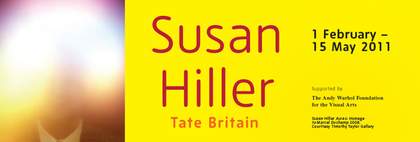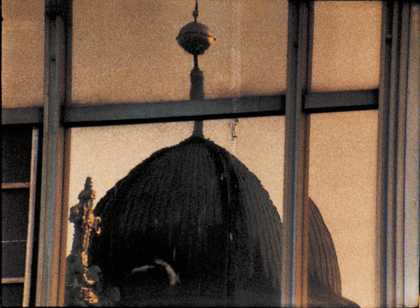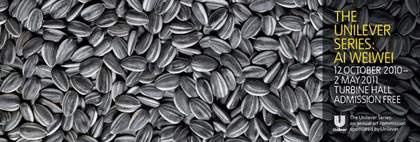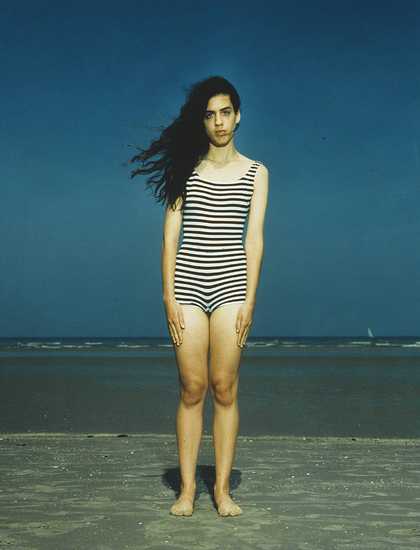Acknowledgement is no longer sought in time, but in space:
Globalization has replaced the future as the site of Utopia.
Boris Groys1
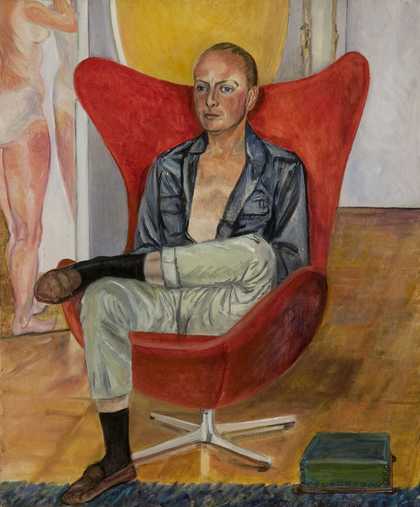
Fig.1
Sylvia Sleigh Alloway
Portrait of Lawrence Alloway 1965
Oil paint on canvas
61 x 50.8 cm
© Private collection
‘Can the art of the twentieth century usefully be treated geographically?’ Lawrence Alloway asked in a little known article entitled ‘Whatever Happened to the Frontier?’ originally published in the Minneapolis Institute of Arts Bulletin.2 ‘When town mouse and country mouse receive day to day, month to month information at the same rate, it is impossible to maintain the former etiquette of priority – center and periphery lose their distinctive character’. This may sound like the words of someone writing about the ‘postcolonial constellation’ (a term coined by the curator and writer Okwui Enwezor in 2003 to describe how racial and national identities have diversified in the era of globalisation),3 but the essay was in fact published in 1963, and focused on one of Alloway’s favourite ideas: the mobility of art. For Alloway, the mobility of art was not only spatial; it was temporal and social as well. It was about an object’s or image’s ability to move through time and space whether literally or virtually, to reconstitute its meanings within different cultural environments and with people of diverse backgrounds. Cultural difference, however, was less intensely interesting to him than the potential of myriad cultural interfaces. An object anchored in its Benjaminian aura of tradition might simultaneously travel by photographic reproduction to be re-contextualised and re-interpreted elsewhere by others. Alloway celebrated the utopian possibility – acknowledged by Boris Groys – that globalisation might move the centre to the periphery and back again every day, making native and stranger, near and far, very hard to gauge.
These metamorphoses were central to Alloway’s understanding of the role of images in contemporary life, a role vastly expanded by new media and the efficiency of international communication networks. The art world, of course, was one such network. Its institutions, exhibitions, biennales, fairs, magazines, books and catalogues were, as he saw it, part of a system that overrode ‘the objective historical influences’ of regional styles and traditions.4 Alloway wrote that:
Art circulates immediately … Works of art do not need to be translated; they are always perceived in the original. Even a reproduction has more one to one references to its original than the best verbal translation. The presentational immediacy of the work of art as an organized, visible pattern is inescapable. It is true that the work may be hard to decipher, but it is not in a foreign language, even though other social customs and assumptions may have contributed to its formation. Even if we doubt the universality of art, it is demonstrably international in scope.5
These are unsurprising comments from the author of the history of the Venice Biennale,6 but they do point out some basic aspects of Alloway’s criticism that are relevant to the contemporary art scene. The first, and best known, is his interest in pluralism, or ‘the aesthetics of plenty’, which he saw as the condition of artistic practice since at least the seventeenth century.7 The task of the art critic when facing this ‘complex present’ was to find an aesthetic appreciative of and appropriate to what the avant-garde composer John Cage called a ‘situation involving multiplicity’.8 Interested in formulating a criticism based on cross-sections of time within which simultaneous and equivalent expressions coexist, Alloway often pointed to the universal expositions of the nineteenth century – huge fairs that showcased a continuum of arts, crafts and innovative technology from multiple countries and multiple epochs. Models of what he called ‘horizontal description’, the expositions (and critics, like Charles Baudelaire, who learned from them) were Alloway’s touchstone for deciphering a globalised art world.9
The panoramic vision fostered by universal expositions was embodied by the first Venice Biennale in 1895, which influenced all major art exhibitions that followed its lead. Focusing only on aesthetic expression rather than the relationship between art and other forms of visual and technological culture, modern art fairs reiterate the hierarchical supremacy of high art. While maintaining the ‘pyramid’ of culture that Alloway mocked in his essay ‘Artists as Consumers’,10 these exhibitions continually update the ‘broad lines of international art’ and increase the global traffic of aesthetic objects and ideas.11 Fascinated by general systems theory and an avid reader of the first cybernetic theorists Ludwig Von Bertalanffy and Norbert Wiener, Lawrence Alloway saw the art world as a circulatory system, a ‘Utopia’ to use Groys’s word, where specific objects from specific places, times and social classes shed their temporal and spatial anchors to become part of a transnational and trans-historical arena. Travelling exhibitions, reproductions and publications cross-pollinate regional, historical and social styles, transforming difference into dialogue and influence. Alloway preferred not to separate artworks from the diverse audiences and changing contexts within which they were seen; their contextual mobility meant that meanings were always slippery, always linked to transient situations and juxtapositions as well as diverse points of view. He believed that no single racial or cultural elite could offer a normative or determinative interpretation of an art that refused to stay in its place, and that often travelled simultaneously as object and information.
This viewpoint meant that Alloway, in the latter half of his career, saw his job as a critic differently to a prescriptive critic, like Clement Greenberg, or a social commentator, like Harold Rosenberg. He often mentioned the linkages between his own critical practice and the work of an anthropologist; one whose job it was to describe ‘the continuous public environment … in which art exists in endless connectivity with other objects and events’.12 Anthropology provided a ‘way out of regarding art as antagonistic to the rest of life’ by fostering a critical position based on ‘observation of usage within society’.13 In his longer critical essays, such as ‘Art and the Expanding Audience’, Alloway often widened the scope of his discussion by describing the ways in which man-made objects (whether artworks, popular films, billboards or images from the mass media) fitted into the larger communication network within which they functioned.14 Pluralism, therefore, was less a final aesthetic evaluation than a scientific research stance, allowing him to review and comment upon the full range of an expanded field.
The ‘aesthetic of uses, of actualization’ grounded Alloway’s critical methods.15 While he was skeptical about the potential of intense and isolated regional artistic expressions, his interest in the specifics of image usage did not allow him to dismiss local circumstances, and the varied ways art can be created, viewed and used. But his rejection of the idea of centres and peripheries meant that he refused to judge, a priori, the significance of an expression by the national origin, social class, race or cultural background of its creator:
It is true that Japanese, Italian and American art, for example, reveal considerable differences from one another. However, the differences are the result not so much of national characteristics, insinuating themselves into the actions of men, as of different choices and interests. These are shaped by the present state of information about art in each country and by the personal use made by the artist of the common store of knowledge.16
Alloway’s international networks were, as the art historian Courtney J. Martin has said, ‘artist centered’; the system was anchored by individuals and the local and international connections they had the opportunity and the inclination to make.17 Like the Chinese critic Wu Hung, Alloway believed that the international scene ‘is constructed through an artist’s personal engagement with both the domestic and global spheres’.18
Working in the midst of the feminist and civil rights movements, surrounded by artists asserting their social identity as a valid subject for visual expression, Alloway understood that the push to expand the purview of art came not only from American and European artists of different races, genders and classes, but also from a plethora of global artists asserting themselves in international arenas. As he put it, ‘There has been an unanticipated upsurge from “outside” or “below” the narrowly defined professional art world, a revolutionary pressure on a society to revise the role of the artist’.19 What differentiated Alloway’s reactions from many of the theorists of identity politics who succeeded him was his emphasis on the metaphysical rather than the physical implications of this change in the conditions of art’s production and reception. Alloway’s art world was, first and foremost, a system, a network that in spite of being artist-driven was never ultimately focused on individual bodies. Vehemently supportive of under-represented artists (because of gender, class or race), of co-operative art galleries like A.I.R. in Soho, and of groups like Women Artists in Revolution and the Art Workers Coalition, Alloway saw a potential revolution in the cultural paradigm. But the situation as a whole would have to expand to accommodate the pressure exerted by new types of people with radically different visions.
The resultant paradigm shift leads to the stated topic of this paper: the relevance of Alloway’s ideas for an understanding of contemporary photography. Although he was enamored of both experimental and popular films and published a book Violent America: The Movies 1946–1964 in 1971, Alloway never focused his writing or attention on art photographers. His essays that made reference to the medium tended to address the interface of photographs with other art forms: as documents of performances and earthworks, traces of conceptual projects or models for photorealist paintings. Sometimes his writings explored the significance and value of reproductions as guarantors of art’s mobility. As a fan of information and systems theory, Alloway was a great proponent of reproduction, duplication, transmission and the roles they played in shaping communications in the international art world:
There is a structural link between the developing technology of making exactly repeatable visual statements (from woodcuts to metal engravings to photography) and the establishment of exhibiting places (which were not churches or palaces) for original works of art. Both are channels which carry the work of art out of its original context, either of creation or ownership, into an open situation. Art is spread in an exploded and non-hierarchic world.20
Alloway was adamant that reproduction expanded rather than diminished an object’s power, and he was dismissive of those who argued for the supremacy of Benjaminian auras over other aspects of artistic communication.
A work of art is an organization, a legible structure, consisting of at least two levels of information, one that can be translated into another medium for reproduction and one that is identified solely with the original channel. Any work of art consists of both special channel characteristics and transmissible information. Critics of the communications network invariably overdramatize untranslatable properties and ignore the constant features in cross-channel transmission … The effect of the communications network has not been to induce conformity but, on the contrary, to maintain diversity.21
It is precisely this diversity that is at stake with the establishment of photographic media in artistic practice, and it here that Alloway’s ideas might be most useful methodologically. For him, an art critic was responsible for ‘the description of new art’, and this focus on recent work differentiated an art writer from an art historian.22 Faced with the ‘aesthetics of plenty’, Alloway’s solution, as previously noted, was to take the observational stance of an anthropologist, and ‘presume a non-prescriptive view of art and society’.23 Rather than begin with exclusionary judgments and hierarchies, Alloway proposed to ‘study the relationship between signs and their users’.24 In Alloway’s writings, this relationship required a sliding scale of understanding when faced with images from art or popular culture. A fancy car or a road sign might be the subject of an advertisement, a photograph by Walker Evans or a photorealist painting, and each created a separate but equal context for the image. At the time that Alloway was writing, his openness to these multifaceted possibilities could yield a range of social and class information. Today, with the internet and tourism connecting an increasingly global world, the implications of his methodology are vastly expanded, especially since photographic images have never been confined to museums.
Photography might at the moment be one of the most popular mediums for artists, but it is also used for fashion, journalism, x-rays, reproductions, signs, snapshots, ID cards and crime scene documentation, and found in archives, magazines, on mobile phones and on the web. In his writings, Alloway might have been clear about photography’s impact on the condition of art in the expanded field. But once the field of photography enters the art world, the ‘great holding pattern’ of our image world becomes exponentially more far-reaching and mobile by definition.25 Since its invention, photography has moved up and down the social hierarchy in all media-based cultures, and it has also substantially reorganised the relationship between the local and the global. The metamorphoses of objects and images are not by-products or accidents of communication; this mutability is photography’s raison d’etre.
The current high visibility of photography in the international art world is, therefore, a game-changer, one that provides an extraordinary opportunity to examine the diverse cultural contexts of ‘signs and their users’. For example, the graphic mobile phone snapshots taken by American soldiers stationed in Iraq of the horrific acts of torture they performed on prisoners in Abu Ghraib were taken as personal souvenirs of their exploits abroad, and sent home to the United States where they were unintentionally exhibited on the internet. The reaction and scandal provoked by the public release of these images marked a new chapter in the history of photojournalism and war photography and resulted in their appearance in scholarly lectures as well as in exhibitions at museums such as the International Center of Photography in New York. Not only did personal photographs jump into an art context; they also moved from one social and religious arena into another, with unsettling consequences. The sexual acts depicted in the images triggered different reactions within different communities. In the United States, these horrific photographs correspond to an increasingly widespread digital culture of aggressive, pornographic websites. For the prisoners, on the other hand, being seen without clothing was not only physical but also psychological torture; such exposure is against the social norms of Islamic culture. The continuous exhibition of these pictures in the West might seem politically righteous to liberals, but from the perspective of many people in the Middle East, it is a continuation of the insensitivity experienced inside the prison. The signs might stay the same, but different viewers or users receive them on different wavelengths, which ultimately change their meanings.
The Abu Ghraib photographs are an extreme example of photography’s mutability but they are not unusual. It is not that local circumstances have no impact on the creation of photographic prints, on the contrary; but the ‘intensity’ (as Alloway would say) of regional styles and circumstances plays a more complex and contingent role in contemporary photography than it does in other fields of visual art. As the cultural critic Roland Barthes stresses throughout his book Camera Lucida (1980), an analogue photograph can never be completely severed from its referent, which existed in a specific place at a specific time.26 Until the digital revolution, that specific time was always present as a subject and limitation of the photographic image, since an analogue photograph is ultimately an event transformed into an object – light objectified on celluloid film. With the global expansion and digital properties of the contemporary communications network, photographs are increasingly unbound even from these moorings, and traces of the nineteenth-century flood into the twenty-first, influencing our vision as surely as the art we might see from Africa or Japan. The plethora of photographs assures that we live each day in a temporal and spatial assortment which the art historian Terry Smith has termed ‘contemporaneity’.27
Even if we limit the discussion to art photography, we find ourselves on a slippery slope. Photographs have a tendency themselves to slide up and down the cultural pyramid, moving from one social class and context as easily as they move between countries and centuries. The study of the relationship between ‘signs and their users’ becomes complex in a field where a commercial photographer like Eugène Atget, who sold his documentary pictures of Paris to libraries and historical societies, can be reinvented in another time and space. ‘Discovered’ by the surrealists just before his death in 1927, Atget was lauded by the American photographer Berenice Abbott and later proclaimed by the curator John Szarkowski (who exhibited Atget’s work at the Museum of Modern Art in New York in the 1960s) to be the father of twentieth-century art photography, the progenitor of the likes of Walker Evans, Lee Friedlander and Stephen Shore. As a consequence, museums in France spent years going through their collections, moving Atget’s prints from their archives to the sacred precincts of high art. In the case of photography, therefore, the ‘aesthetics of uses, of actualization’ is continuous; historians can try to recreate historical contexts, but no one can control the ways in which the contemporary reception of a photographic image will reorganise the same information. As the users change, the signs change with them; there is no such thing as an authentic reading of a moment frozen in time, any more than there is an ‘original’ photograph.28
Our present context, then, demands a methodology that embraces these conditions rather than attempting to control or repress them. Given the complexities of time, space and culture that shape our current reality, the question is how can we create a ‘horizontal description’ of contemporary photography that celebrates the diversity of our increasingly interconnected image world? Some writers, such as the French historian Michel Frizot, tend to argue that there is a single, universally relevant history of photography; others, like Geoffrey Batchen, refute this, and feel that only a constellation of local, specific histories can adequately describe the medium’s development. But there is a middle ground, a double-layered understanding of the field that takes account of the simultaneity of the local and the global in what Alloway would have called a cross-section of the complex present. There is indeed only one technological history of photography. But there are millions of local stories, moving through time and space and societies, cross-pollinating and influencing each other since the day the medium was invented, and any ‘horizontal description’ would need to take account of the diverse and equivalent threads arrayed ‘in a great holding pattern … in this radar field’.29 The field of photography is one place where the art world’s need to create scarcity, fix hierarchical values and ascribe meaning has been deeply detrimental. By the 1970s, photographers were told to destroy their negatives or limit their editions to avoid flooding the market with the ‘aesthetics of plenty’. Instead of maintaining diversity by celebrating the sheer ubiquity of photographs, functions and practitioners, the rush to establish stars and find masterpieces means that many major museums and collectors have willfully acquired the same big name and big money images; they have rushed, in other words, to create copy-cat collections. As Alloway realised: ‘The existence of copious information in the art world does not mean it will be used.’30
In the late nineteenth century, the international pictorialist movement – championed by photographers horrified by the hoards of amateurs using the new Kodak cameras – developed styles and techniques of working by hand that differentiated their products from the masses of snapshots and allowed them to enter the precincts of high art. Cutting off creative experimentation and technical options with rules and elitist ideals, pictorialist photographers used established painterly standards to exclude the uninitiated from their midst. Looking back, the energy and forward thrust at the turn of the last century was with the amateurs, and the artists seem like they are trying to restore the ancien régime with their prescribed international style of fuzzy pictures. Today, we are in a similar moment, but it is harder to see ourselves, especially when the discourse surrounding photographs is governed by the particular interests of the art world and marketplace.
Most contemporary information is delivered through an astonishing and omnipresent array of digital images. Often small and usually virtual, we see them on computer screens, mobile phones, iPads and in the mass media. The art world, on the other hand, has chosen just this moment to highlight the opposite extreme, and large, expensive photographs by artists such as Andreas Gursky, Candida Höfer and Thomas Struth. It idolises Gregory Crewdson and Jeff Wall for their extravagant directorial productions; it celebrates Luc Delahaye for jettisoning his career as a photojournalist and transforming his reportages of Afghanistan, Palestinian refugee camps and post-earthquake Haiti into enormous (and profitable) works of art. Observing this bizarre disjuncture from Alloway’s anthropological perspective, we can begin to formulate a ‘horizontal description’ of our lop-sided usage of contemporary photography.
What is needed is a more nuanced vision of the expanded field today, one that will allow for the circulation and mobility of images while at the same time respecting the manifold ‘relationships between signs and their users’. Such a vision will maintain diversity, but it will also respect the postcolonial constellation, our brave new world where the centre and the periphery are continually meeting and merging in magazines, museums, international art fairs and on the web. For example, the photographer Philip Kwame Apagya’s photographs of friends and neighbours from his provincial village in Ghana posed in front of painted backdrops (of Mecca, of air travel, of technological and architectural wonders far removed from the sitters’ world) must be understood on the one hand as localised portraits of individuals rehearsing their dreams, and on the other as valuable objects depicting anonymous Africans bought and sold in an international art market.
There are those who feel that images like these should have some kind of ‘authentic’ meaning and context – but such an idea is ultimately essentialist. The audiences and usages of Apagya’s images can and should coexist, but, and this is important, both of them should be part of the discourse. As it now stands, the art world and its elitist attributions of meaning and value overwhelm the original context of production. There is no reason, however, why we cannot live in a world where the same images shown in a gallery in Paris are also on display in a grandmother’s home. Universality comes at a cost when cultural communication is downplayed in favor of one elitist international language.
A multilayered understanding of image production, dissemination and reception, on the other hand, can expand the capacity for international communication. The Iranian filmmaker Shirin Neshat has emphasised the necessity for free artistic expression, and its importance in articulating social issues and injustices, in particular ones that her compatriots in Iran are forced to endure.31 Her strong feelings on this subject link her to a number of artists who have spoken out about situations in their homeland from abroad. One of the most articulate is the Haitian writer Edwige Danticat, who in her new book of essays accepts her responsibility as an immigrant artist to ‘create dangerously … as a revolt against silence, creating when both the creation and the reception, the writing and the reading, are dangerous undertakings’.32 The urgency expressed by these women is simultaneously transmitted and suppressed by the hegemony of the art market and its various discourses. Many contemporary artists understand both the possibilities and pitfalls inherent in asserting national issues in an international forum, and they are learning to manipulate the different meanings, uses and values of their works to describe the diversity of their experiences. Artists like Walid Raad and Ai Weiwei have learned, by shrewd necessity, to speak art’s international language – and they see it as just that, a linguistic platform that can be altered for effect by each initiate, not a cultural endowment that belongs to a specific race, gender or nationality. For many global artists, putting themselves in the big picture of culture means simply mastering its tools, the language of art, but also the diverse image streams on the international information highway.
Increasingly, in fact, contemporary art is less about a specific subject than it is about these image streams and their interpenetrations. David Joselit has remarked that more and more artists have decided to aggregate existing images rather than create new ones.33 Instead of using a camera to describe the world or their perception of it, they collect and reorganise extant images that mediate their experience. Such a stance on the part of global artists makes it imperative that viewers position themselves within Alloway’s ‘expanded field’ of media if they wish to understand contemporary expression. Works by artists such as Tacita Dean and Susan Hiller, following in the footsteps of Andy Warhol and Gerhard Richter in their use of popular imagery as primary aesthetic material, are virtually incomprehensible without a sophisticated awareness of the image landscape that serves as their primary creative environment. Recent changes in our occupation of both time and space are signalled by aggregations of pictures, virtual museums without walls. Images simultaneously provide information about the world and our mediation of it; they can signal changes and juxtapositions in culture, in class, in temporality and subjectivity without making reference to concrete situations. They can also emphasise the fissures and complications inherent in our diverse visual cultures.
One of Lawrence Alloway’s essays from 1973, about photorealism, might be relevant and useful here. In it he described this type of painting as:
an art of high visual impact, but with complexities held in suspense within it; the terms photographic and realism can be viewed centrifugally, as tearing themselves apart by the interplay of channel and iconography … The realism of those artists is diverted from its expected target, turned away from the notion of use in the world and the occupancy of real space and affiliated with the sphere of symbolic use … There is no single and direct route from the signifier to the signified.34
Today, young artists from all over the world create in the interstices between channel and iconography, using image-forms from the past and present to position themselves within and between cultural experiences. Manipulating the myriad media possibilities of the contemporary environment, they are inventing new ways of describing the multiplicities of their lives. Tzed within each group, whether Puerto Rican teenagers, yuppies, exotic dancers or the elderly sitting on park benches in Brooklyn. Transforming herself into the strahe work of South Korean artist Nikki Lee, and its reception in the New York art world, is a good case in point. Lee has too often been described by critics as an Asian version of Cindy Sherman – an assessment that makes little sense if one sees her art in the context of her background and experience rather than simply within the context of contemporary Western art. Lee began to ‘perform’ her photographic series when she was a graduate student in New York, a foreigner committed to using visual imagery to both explore and participate in a new environment. Fascinated by the many subcultures she encountered in her adopted city and country, Lee decided to merge with them by careful observation, dress and behaviour. She spent months shopping for clothes and accessories, adjusting her weight and practising skills pringers she beheld, she joined their communal gatherings and – always announcing first that she was an artist doing a project – had informal colour snapshots taken of her participation in their social rituals.
Historically, it has not been uncommon for artists to use their cameras to bridge chasms of culture. André Kertész, Lisette Model, Robert Frank and Sylvia Plachy were all foreigners who arrived in New York and created images that would help them make sense of a foreign land. But Nikki Lee arrived on the scene after Cindy Sherman, and she understood that she had another option: she was free not only to observe others but also to insert herself in the picture with the natives, to use her own body to make a visual link between the East and West. Merging the Korean insistence on group identity and belonging with the snapshot style Americans recognise as indicative of individual experience and memory, she visualised both the personal and the political meanings of cultural exchange. Understanding the expressive possibilities of joining ‘Eastern social practices with Western image-forms’,35 Lee made that merger the real subject of her art. Seeing her as yet another Cindy Sherman not only maintains the hegemony of Western art but also misses the point (and the importance) of her statement entirely.
Nikki Lee is not alone in her self-conscious manipulation of image-forms. From Zoe Leonard to Hank Willis Thomas to JR, many artists are choosing to make the content of their expression the coexistence of, and dialogue with, the different types and levels of images that define their experience. Any contemporary theory not open to the mutability of signs is missing one of the central aspects of contemporary artistic practice. As photographers become more mobile and their work more visible, they are using the common pool of global images to describe a new and expanded experience of contemporaneity. Instead of centre and periphery, we have artists such as the African-American Carrie Mae Weems, the Samoan Shigeyuki Kihara and the Japanese Yasumasa Morimura literally putting themselves into the picture that used to define the unbreachable citadel of the Western tradition. Thanks to contemporary photography, the art world is becoming a chat room where artists use the signifying power of imagery to describe and expand their understanding of each other and the world wide web of culture. This really is a spatial utopia, and re-examining ideas that Alloway put forth during his lifetime can help to illuminate it in all of its abundance and complexity.

